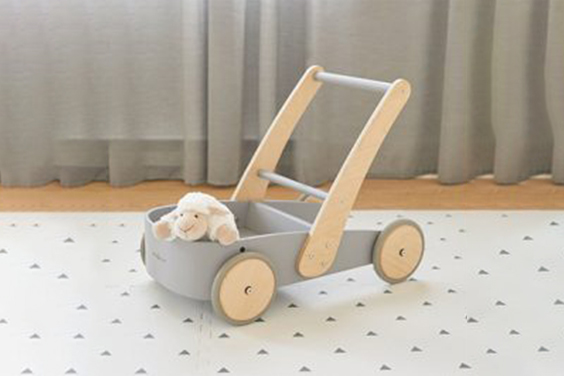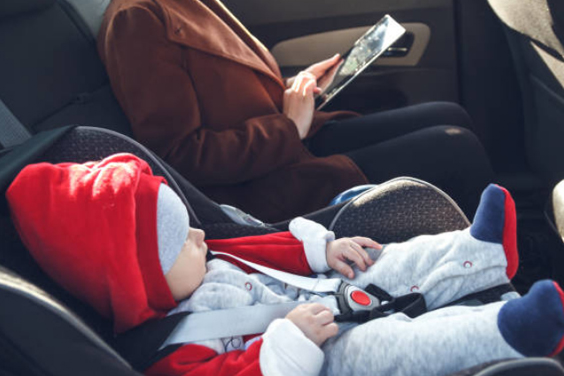Car crashes are one of the most common death causes all over the world, but one thing that makes them extremely petrifying is the fact that it is the most common death cause among infants. According to stats, 2.91% of infants and 4.78% of 3-year olds die in a car crash on yearly basis. Keeping this terrifying reality in view, countries all over the world changed their traffic policies and passed new strict laws for child safety and safe car driving. Speaking of which, in 2006, EU law made some restrictions in their car driving policies. Not just for adults but infants as well. These laws were passed so that people drive safely and pay extra attention while driving with infants. These laws included some vehicle and mobility inclusions as well for the infants.
So now, while prepping for your newly born’s bedroom set, you have to spend extra cash on the riding gear of your infant, because if you don’t, you are sure to get charged a huge amount of fees. Therefore, in this article, we will inform you about the latest EU car seat laws that you have to be alert about and through which you can invest in the appropriate infant riding gear. Make sure to read it thoroughly till the end, after all, it is about your infant:
Latest Car Seat EU Laws:
Below are some of the latest car seat laws passed by the European Union:
Law No.1: Infant Car Seat:
According to the EU law, infants and children aged 3-12 must use an infant car seat while traveling in their private car. The car seat or child restraint system must be installed in the car in use by the parents. The car seats for infants are different as compared to those designed specifically for toddlers and pre-teens. Although some infant car seats are convertible, however, children may face issues such as short leg space and uncomfortable seats.
Law No. 2: Certified Car Seats:
Infant and toddler car seats must have the ECE R129 or the ECE R44.04 safety standard approval before making them available for retail. If you’re purchasing an infant car seat, make sure to check whether they are approved or not. This can be a huge deal since you’re spending quite a few pounds on the safety equipment for your child. The safety-approved car seat stands up to the safety standards set by the EU and stated by their law. While the un-approved car seats have a chance of doubt.
Law No.3: Selection of Car Seats:
There is not much difference or competition between the ECE R129 and ECE R44.04. There are slight variations in the ECE R44.04, which was launched in the year 2013. This one has a few extra features that are okay even when not counted. The improvements include convertibility, a lightweight body, easy to fit, more room for the baby, and wide-leg space. On the other hand, the ECE R129 does not have the above extra features and focuses on the major aspects such as safety gears, seat belts, comfortable seats, etc. If you ask us, both are fine, but you’re investing in a car seat for a long time, then go for the ECE R44.04.
Law No. 4: Placement of Car Seats:
Proper placement of car seats is very important for child protection and safety. According to the EU law, the infant car seat should be installed in the middle portion of the passenger seat, in a rear-facing position. The EU law clearly states that children up to 15 months of age should be made seated in a rear-facing position to keep them protected in case of any accidents. Also, the airbag must be de-activated. When your child turns 16 months old, you can activate the airbag again by facing the car seat in the front-facing position of the passenger seat.
Law No. 5: Public Vehicle Car Seat:
While traveling in a public vehicle, one can not install the infant car seat from the beginning, of course. In such a case, EU law has exempted public vehicles from the infant car seat rule. However, it is still suggested that the parent checks the taxi properly before booking it. If the parent is satisfied with the adult safety standard, only then should he book the ride. This EU law is pretty lenient and most European countries have advanced this law to a stricter policy, according to which, the taxi must have an infant car seat.
Importance of the EU Car Seat Laws:
The EU law was made to protect children (specifically infants) from the high and rising death rate in all of Europe. The above laws were a standard security check for traveling with infants. The car seat provides the following advantages:
- Infant car seats keep the child in place and don’t let him move while the car is on the road.
- It keeps the child locked up in seat belts so that he doesn’t fall or get hurt.
- The safety gear and the 5-pont harness design in the car seat keeps the child protected in case of any car crashes or accidents.
- Other than safety purposes, infant car seats are a great way to train children how to sit in a car properly.
- Infant car seats are the proper size for toddlers and kids and give them an area to fit themselves in.
Conclusion:
Although the above rules state a lot about the infant car seat requirement in Europe, many countries have additional laws. The EU law has set some standard laws that must be implemented all over Europe but the European countries can add to these laws and make them even more strict. This increases their safety standards and makes them safer for children, only if the laws are implemented.






